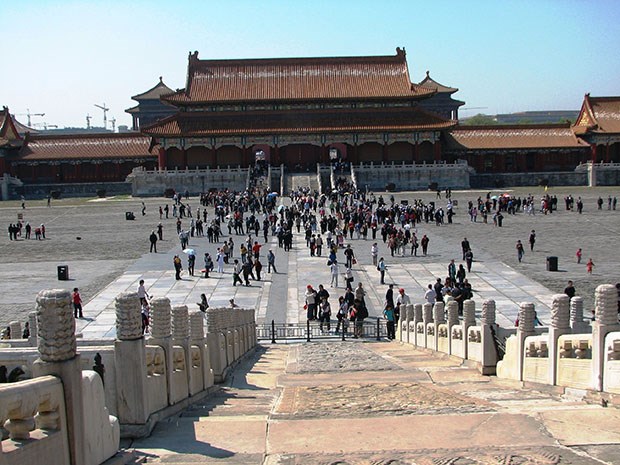Despite warnings about Beijing’s pollution, the scene from my Ritz Carlton suite’s windows encompass clear blue skies above a panoramic view of the city’s financial district. In a courtyard below, citizens practise Tai Chi, their elongated forms in the bright sunlight twisting and bending in a seemingly choreographed shadow play.
First up on my day’s itinerary is a pedicab ride to a traditional hutong settlement — in Beijing’s old city quarter. The word “hutong” meant “water well” back in the 13th century, but today it refers to a colony of dwellings set within a warren of alleyways.
It’s hard to imagine living here, cheek-by-jowl with your neighbours, where the air is thick with cooking aromas and noisy vendors and where drains with kitchen waste or ditch water flow past one’s door.
Emerging from the hutong, a pleasant tree-lined avenue lies between the sun-flecked Houhai Lake on one side and about 100 restaurants and bars on the other. Further on, stalls display souvenirs, toys and clothing items, and locals and visitors jam the road as far as the eye can see. Chinese pop music blares from a shop selling CDs and the smell of spicy fried noodles wafts out from sidewalk food kiosks.
On every visitor’s itinerary is Beijing’s Imperial Palace, which is instantly recognizable from the set of The Last Emperor. As I walk through the majestic entrance gate into the Forbidden City, there is a concerted “Aaah!” from the crowd at the first sight of the Hall of Supreme Harmony, its fluted gold-glazed tiles shimmering in the afternoon sun.
This was the centre of royal pomp and power where formal ceremonies — coronations, weddings and investitures — would have taken place during the Ming and Qing dynasties.
Moving from one courtyard to the next, it’s as though I am unfolding a many-layered treasure. Each gate opens to a new vista, with palaces bearing poetic titles. Red, emblematic of royal power, is the predominant colour throughout the Forbidden City and every palace boasts flamboyant ceilings with intricate interlocking wooden painted tiles.
The next afternoon I stand on the walkway looking out from the ramparts of the Mutianyu section of the Great Wall of China, gazing at the same scene that thousands of workers and soldiers would have looked out on from the 6th century onwards. There is an overwhelming sense of the passage of time embedded in the very stones on which I’m standing.
I try to wipe out the clicking of cameras and the noise and chatter of hundreds of tourists to envision a soldier more than 1,400 years ago in one of the lookout towers, perhaps eating his lunch and chatting to a comrade. Or doing something even as mundane as blowing his nose!
A gust of wind ruffles my hair, just as it would have ruffled his — and I can’t but think that a human foible or two is what breathes life into the grand, yet impersonal, sweep of history.
Travel Writers’ Tales is an independent travel article syndicate that offers professionally written travel articles.



